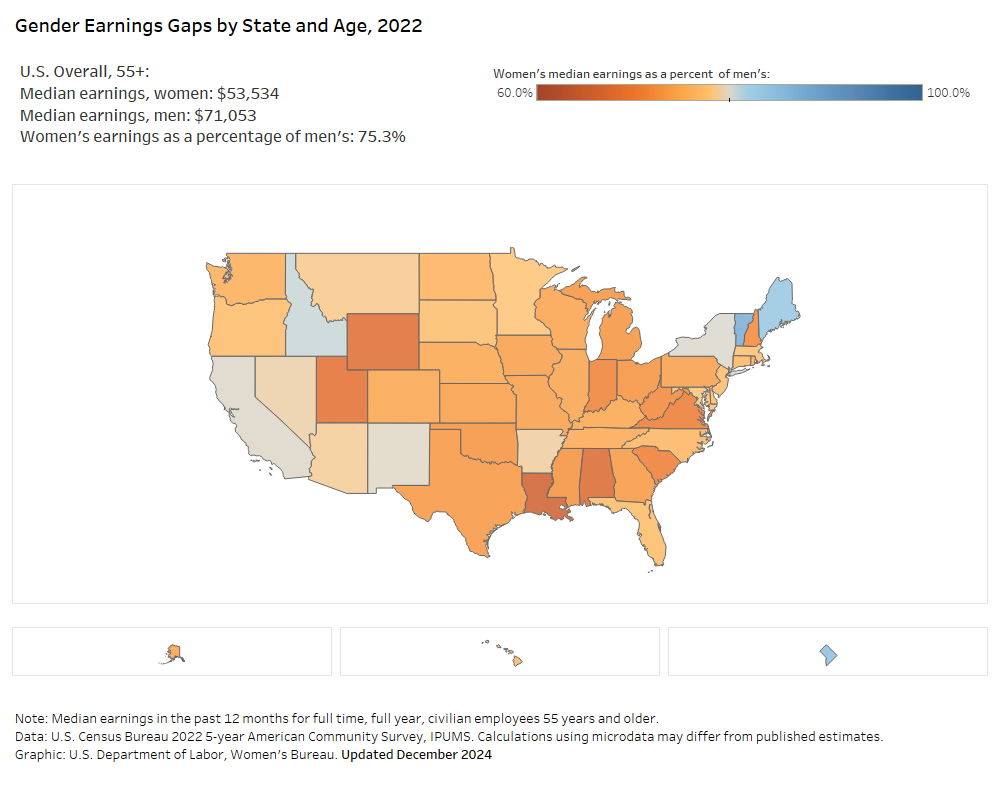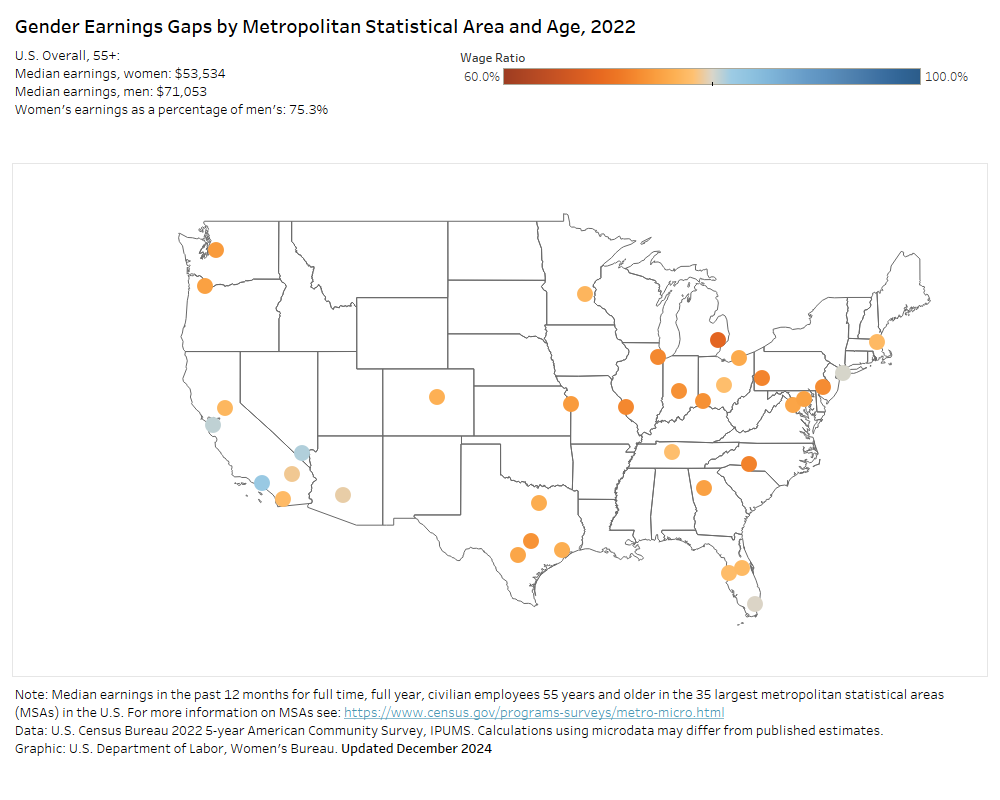
No matter where they live, older women face a considerable wage gap. Across all 50 states and the 35 largest metropolitan areas in the U.S., they are paid less than older men. Prime-age women (ages 25-54) are also paid less than prime-age men, but the wage gap is larger for older women in nearly every state.
While the size of the wage gap for full-time, year-round workers ages 55 and older varies across states, in no state do women’s median wages eclipse those of men. For every dollar paid to older men, older women are paid anywhere from 66 cents (in Louisiana) to 88 cents (in Vermont). Older women in Washington, D.C. (85 cents) and Maine (83 cents) experience relatively small wage gaps, while older women in Alabama (67 cents), Wyoming (68 cents) and Utah (68 cents) face sizable gaps.
Across all states, median wages for older women are less than median wages for older men.

In all states except Idaho, the wage gap experienced by older women is larger than that of prime-age women. The same pattern holds for each of the 35 largest metro areas in the U.S., all of which include more than 2 million people: Women face a wage gap compared with men, and this wage gap is largest among older women.
Across large metro areas, the wage gap for older women is largest in Detroit, where they make 69 cents for every dollar made by comparable men. The gap is also particularly large in Charlotte (72 cents) and Pittsburgh (72 cents). On the flip side, the wage gaps for older women are less severe in Los Angeles (82 cents), Las Vegas (81 cents) and San Francisco (81 cents).
Across major metropolitan areas, older women are paid less than older men.

Many factors contribute to gender wage gaps in general, such as occupational and industrial segregation, women’s work experience and educational attainment. Geographic variation in these factors may also play a role in the geographic variation in the gender wage gap. Additional factors, including differences in union membership rates, minimum wage and paid leave laws and the affordability of child care may also drive geographic differences in the gender wage gap.
Explore the gender wage gap by age for your state or metro area using our interactive maps and learn more about equal pay and pay transparency.
Erin George is an Economist at the Women’s Bureau. Gretchen Livingston is the Quantitative Research Branch Chief at the Women’s Bureau.

 U.S. Department of Labor Blog
U.S. Department of Labor Blog